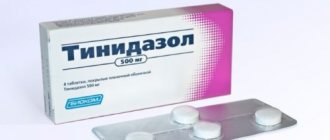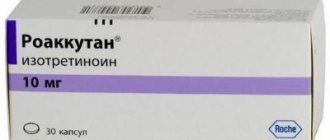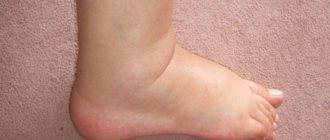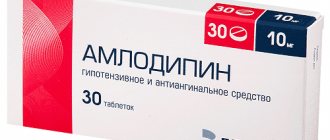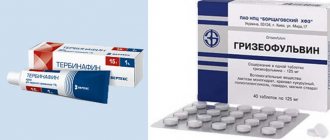Pharmacodynamics and pharmacokinetics
Pharmacodynamics
The action of carbocisteine is based on the activation of the enzyme in the cells of the bronchial mucosa. As a result, the ratio of different types of sialomucins in bronchial secretions normalizes: the number of hydroxysialoglycopeptides increases and the number of neutral glycopeptides decreases. This helps to reduce the viscosity of bronchial secretions and mucus discharge from the paranasal sinuses, reduce coughing and improve the process of mucus and sputum discharge, accelerate regeneration and normalize the structure of the mucous membranes.
As a result of a decrease in the number of goblet cells in the terminal bronchi, the amount of mucus produced decreases. Carbocysteine restores specific immunological protection (secretion of active IgA) and improves mucociliary clearance.
Pharmacokinetics
Carbocisteine is rapidly absorbed when taken orally. Due to active metabolism in the liver and gastrointestinal tract, the drug has low bioavailability. The half-life is 2 hours, the drug is excreted mainly through the kidneys. The maximum concentration (Cmax) in the blood is after 2 hours.
Pharmacological properties of the drug Carbocisteine
Carbocysteine (L-cysteine, S-carboxymethyl) is a mucolytic agent. Improves the rheological properties of sputum by increasing the production of sialomucin and the ability to break disulfide bonds of acidic mucopolysaccharides of sputum, which leads to depolarization of mucoproteins and a decrease in the viscosity of bronchial secretions. Regulates mucociliary clearance. Inhibits the local effects of inflammatory mediators, promotes the penetration of antibiotics into bronchial secretions. Rapidly absorbed from the digestive tract after oral administration. Actively metabolized during the initial passage through the liver. The maximum concentration in the blood develops 2 hours after oral administration. The half-life is about 2 hours. In the blood, liver and middle ear, carbocysteine concentrations are determined much longer than in other organs and tissues (in the middle ear - up to 24 hours from the moment of administration). It is excreted in the urine, mainly unchanged.
Indications for use
Treatment of respiratory tract diseases of various origins, accompanied by the production of a significant amount of difficult to expectorate, viscous sputum of the mucous or purulent-mucous type:
- Acute/chronic obstructive bronchitis .
- Bronchiectasis.
- Pneumonia.
- Bronchial asthma.
- Cystic fibrosis.
- Otitis , rhinitis , sinusitis .
- Preparation for bronchography/bronchoscopy, tracheostomy.
- The drug is also prescribed after intratrachial anesthesia and operations on the respiratory organs.
Compound
Carbocisteine, used to treat cough, is one of the monocomponent drugs. The chemical content of a particular medicine differs depending on the percentage of the base ingredient.
Composition of 2% syrup (100 ml) for children:
- 2 g of carbocisteine - a basic component that affects the respiratory system;
- sucrose;
- methyl parahydroxybenzoate;
- sodium hydroxide;
- cinnamon oil;
- caramel flavoring;
- purified water.
The composition of 5% syrup (100 ml) for adults includes the same components, but the amount of active ingredient increases to 5 g.
Instructions for Carbocisteine (Method and dosage)
For adults, Carbocisteine is administered orally in the form of syrup or capsules 3 times a day at a dose of 750 mg; after the onset of effect - 1.5 g/day in 3-4 doses.
Lysine salt of carbocisteine is prescribed for adults and children over the age of 12 years (the granules are dissolved in 0.5 glasses of water and mixed well): dose per day is 1.35 g for 2-3 doses or once a day 2.7 g. Treatment is prescribed for 1-1 ,5 weeks.
Instructions for the use of Carbocysteine for children: Carbocysteine for children aged 1 month - 2.5 years - 2 times a day, 50 mg, for children from 2.5 - 5 years, 2 times a day, 100 mg, and for children over 5 years - 200 mg. 3 times a day. The course of treatment is prescribed individually depending on the nature and form of the disease. On average, in an acute process its duration is 4-6 days, and in a chronic process - 10-30 days.
Lysine salt of carbocisteine for children over 5 years old is prescribed at a dose of 1.35 g at a time per day in the form of syrup or twice a day at 450 mg, for children 1 - 5 years old at a dose of 675 mg.
special instructions
From the first days of taking Fluifort, due to improved secretion excretion, the expectorant effect increases.
The use of Fluifort does not lead to the development of addiction or metabolic dependence.
Treatment with Fluifort can be combined with physiotherapeutic procedures.
Fluifort syrup contains sucrose. This should be taken into account by patients on a low-calorie diet, as well as patients with diabetes. 1 tablespoon of syrup contains 5.25 g of sucrose, 1 teaspoon of syrup contains 3.5 g of sucrose.
Carbocisteine analogues
Level 4 ATC code matches: Mukolik
Abrol
Ambrosan
Bronchorus
ACC 100
ACC 200
ACC Long
ACC
Mukolwan
Lazolvan
Bromhexine 8
Bromhexine 8 Berlin-Chemie
Bromhexine
Bronchobos
Erdomed
Pulmozyme
Pectolvan C
Halixol
Ambrobene
Acetylcysteine
Bronchocod , Bronkatar , Bronchobos , Libexin Muco , Mucopront , Drill expectorant , Mukosol , Mukodin , Fluvik , Fluifort , Fluditec .
When replacing Carbocysteine with Carbocysteine analogues, consultation with a doctor is necessary.
Release form - syrup
Carbocisteine syrup is one of the most popular dosage forms. The reason is the rapid absorption of the active substance and pleasant taste, which ensures high adherence to treatment even in young children.
The syrup consists mainly of a sweetener and a bioactive component dissolved in it. Additional addition of flavorings and flavor enhancers to the composition is allowed.
A special feature of the drug Carbocysteine remains the presence of two options for sale:
- 2% cough syrup for patients under 18 years of age;
- 5% cough syrup for adults.
Before purchasing a specific medicine, you should consult your doctor.
Excess of dosage and negative reactions
The medication is well tolerated by patients during the treatment of cough with sputum formation. The drug rarely causes undesirable consequences, which explains its popularity in the pharmaceutical market.
Adverse reactions:
- weakness;
- dizziness;
- dry mouth
- abdominal discomfort, vomiting, diarrhea;
- allergic reaction such as urticaria.
No episodes of dosage excess were recorded. Theoretically, there will be an increase in the undesirable effects described above. If adverse reactions occur, you should consult a doctor.
Interaction with other drugs
Carbocisteine is recommended to be combined with other drugs to increase the effectiveness of therapy for diseases of the respiratory system. Combining syrup with expectorants and mucolytic agents is allowed. If an infection occurs, additional antibacterial drugs are prescribed.
Important! It is not recommended to treat with Carbocisteine and antitussive medications with a central mechanism of action (glaucine, codeine, butamirate). The reason is a high risk of developing mucus stagnation in the bronchial tree, which is fraught with an increase in the inflammatory process with the possible addition of a bacterial infection.
pharmachologic effect
Carbocysteine, as a chemical compound, is a popular mucolytic, widely used in pulmonological practice. Regardless of the trade name of the drug, the drug affects the chemical composition of sputum.
The action is due to the activation of sialic transferase, an enzyme of goblet cells of the bronchial mucosa. Disulfide bonds (“bridges”) between the glycoprotein molecules that make up the mucus are destroyed. The result is the dilution of sputum, facilitating its elimination from the bronchial tree.
In addition to this effect, cough syrup has the following effects:
- stimulation of regeneration of the inner surface of the bronchi;
- increased motor activity of the cilia of the respiratory tract epithelium;
- stabilization of microcirculation;
- stimulation of IgA synthesis, which is part of the local immune defense of the respiratory tract from pathogenic microorganisms;
- reduction in the severity of local inflammation.
Fact! A systematic review by the Cochrane Collaboration, conducted by independent experts from around the world, confirmed the high effectiveness of the carbocysteine molecule in the treatment of cough in both children and adult patients. The medication is recommended for routine use in outpatient and hospital settings.
Reviews
Instructions for use of Carbocisteine syrup - DOWNLOAD
By analyzing the reviews of patients using the described medication, we can highlight the general positive and negative aspects of the drug.
Benefits for patients include:
- high efficiency;
- availability. The price of Carbocisteine is slightly lower than its analogues;
- safety.
A negative point, according to consumers, is the inability to use the medicine in children under 2 years of age.
Important! It should be borne in mind that reviews are an auxiliary point that you should pay attention to when choosing a medication. The doctor has the final say in choosing a therapeutic program.
Top 5 analogues
The active substance described in the article is available for use by various pharmacological companies. Numerous trade names of carbocisteine practically do not differ in the effectiveness of treatment. The only difference is the price of the product.
Popular analogues of Carbocystenin (with the same active ingredient):
- Bronchobos – 350-400 rubles;
- Libexin Muco – 430-470 rubles;
- Fluditek – 350-370 rubles;
- Mucopront – 300-320 rubles;
- Mukolsol – 290-330 rubles.
Carbocisteine is not the only mucolytic that is popular in pulmonology.
Top 5 analogues created from other active ingredients:
- Ambrobene (ambroxol hydrochloride);
- Herbion (plantain leaf extract);
- Doctor Mom (complex of medicinal plants);
- Bromhexine (bromhexine);
- ACC (acetylcysteine).
The choice of a specific drug should be made after an appropriate examination by a doctor to minimize the risk of developing undesirable consequences.
